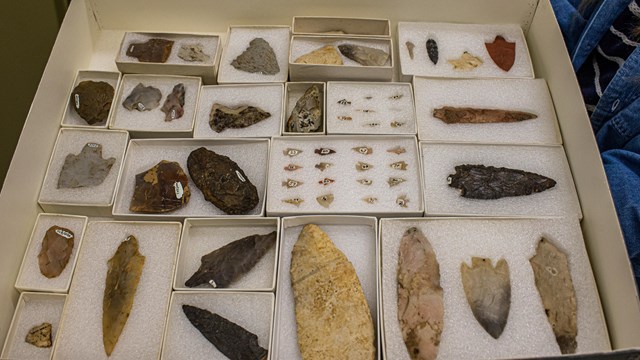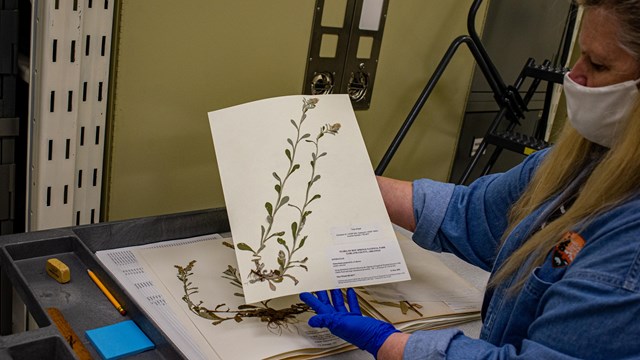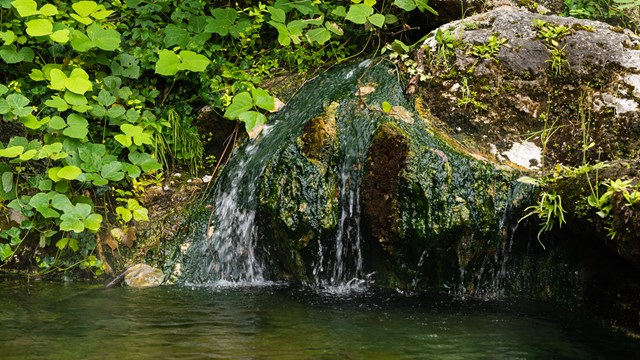|
Research permits in Hot Springs National Park may sometimes allow researchers to conduct their work in places that are off limits to or not often used by other visitors. You are expected to follow all park regulations, and conditions of your permit. If a ranger finds you violating park rules or permit conditions, you may be subject to a fine, or revocation of your permit. If there is a conflict with your proposed field plans (temporary fire closure, etc.), they will inform you by phone or email. Safety FirstPersonal safety and preservation of park resources must take priority over your research project. Do not take chances. Remember, in remote areas a small mishap can potentially lead to serious consequences. Hot Springs National Park is filled with natural wonders that are also potential hazards. There is no guarantee of your safety. COVID-19 PrecautionsHot Springs National Park is modifying visitor experiences to help prevent the spread of infectous disease. Some facilities or events will be closed or cancelled. Please check locally and on the park's webpage for current conditions and continue to follow CDC guidelines. As circumstances continue to change and we modify our operations as necessary, we thank you for your patience and cooperation.
Wildlife and YouNever feed wildlife, even birds and squirrels. Animals that become dependent on human food may become aggressive toward people and have to be killed. Animals also carry diseases that can be transmitted to people. Keep all food, garbage, or other smelly items packed away when not in use. Ticks & MosquitoesTicks and Mosquitoes are a nuisance most of the year in Arkansas, but especially in the hot, humid, summer months. Try to avoid tall grass and dense vegetation. Wear repellent even on shoes, socks, cuffs, and pant legs. Tuck your pant legs into your socks and your shirt into your pants, and wear light colored clothing to make it easier to find crawling ticks. Check your clothes and your body often. Repellents and wearing clothing with long pants and sleeves are the best options for enduring insects in Arkansas. Bathe or shower within two hours after being were ticks live to find and wash off ticks that may be crawling on you. Hazardous WildlifeWe may not have grizzlies and bison in Hot Springs National Park, but hazardous wildlife does exist within our boundaries. The Texas red-headed centipede is venomous and has a sharp, painful sting similar to a bee sting: usually mild, but occasionally resulting in acute reactions. In rarer cases, bites cause minor skin necrosis, dizziness, nausea, and headaches. Other multi-legged hazards include black widow and brown recluse spiders. Both are commonly found under rocks, logs, or in loose bark, and have a painful bite that can cause nausea, muscle cramping and in rare cases death. If you are bitten by a spider seek medical attention immediately. Venemous SnakesVenomous snakes can live in the park as well, including the Southern Copperhead, Western Diamondback Rattlesnake, Timber Rattlesnake, Western Pygmy Rattlesnake, Texas Coral Snake, and the Cottonmouth/Water Moccasin. Be cautious of where you place your hands and feet. Rattlesnakes, centipedes, or spiders may be sheltering under rocks or downed trees. Black BearsRarely, you might spot a black bear at the park. What should you do if you meet a black bear? Never approach a bear. If a bear approaches you, stand up tall, and make loud noises- shout, and clap hands. Slowly back up (do not run) and leave the area. Report all incidents to a park ranger or call 911 immediately. ChiggersLast, but not least are chiggers. From the family of Trombiculidae, these small mites cause an irritating rash and severe itching. It is during the larval stage that they seek out hosts to feed on. They inhabit grass, weeds, and vegetation in early summer. These microscopic relatives of ticks’ crawl onto their hosts and inject an enzyme into the skin to feed on the effected cells. Once the larvae detach and fall off, severe itching, skin rash, or hives occur. Immediately wash with soap and water if you suspect you have chigger bites and apply an antiseptic to any welts. General TipsWhen hiking stay in the middle of the trail away from vegetation. Wear long sleeves and long pants tucked into socks or shoes. Use insect repellent along the tops of shoes, pants waistband, shirt collar, and cuffs. Shower once you end your hike and wash your clothes in hot water. WeatherHot Springs National Park can experience severe weather any time of year. Calm, sunny mornings can abruptly turn into fierce, stormy days. Heavy rain and lightning are common during the spring and summer. Springtime also has the highest potential for tornadoes. Check weather conditions before you go into the field. TerrainWhen traveling through the park pay attention to forest conditions. Falling trees are an ever-present hazard when traveling or camping in the forest. Be aware of your surroundings as trees can fall without warning on a windy day. Driving ConditionsDriving conditions can be extremely variable. Wildlife in roadways, changing weather conditions, and visitors who are not paying close attention to their driving are common hazards. Please remember to be patient and drive defensively. 
Curatorial Responsibilities
Learn what to do before you begin collecting and once you are finished. 
Material Transfer Responsibilities
Learn more about requesting and sending museum and collected specimens. 
Research & Science
Learn more about the research permitting process and responsibilities at Hot Springs National Park. 
Inventory & Monitoring
I&M builds a strong scientific foundation for the management and protection of natural resources in the Park. Learn more. 
Natural Features & Ecosystems
Learn about the geologic features, thermal springs, and natural features that make Hot Springs National Park unique. |
Last updated: May 28, 2021
